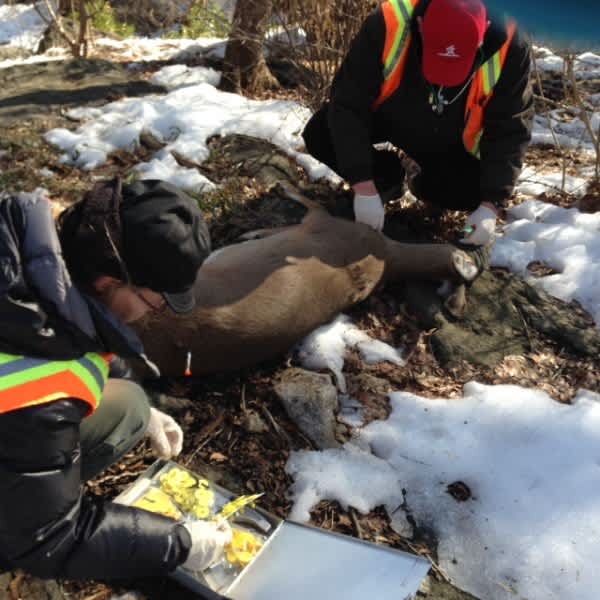New York Village’s Deer Birth Control Program Sees Slow Progress
OutdoorHub Reporters 04.09.14

Last month the village of Hastings-on-Hudson, New York began its deer immunocontraception program. In a press release earlier this year, village officials said their goal was to capture and administer an immunocontraceptive to 60 does during the winters of 2014 and 2015. The Associated Press reported that at the end of this year’s four-week program, only eight does had been successfully captured.
Hastings-on-Hudson announced its controversial deer “birth control” program last year and worked with the state Department of Environmental Conservation (DEC) to launch the project. Although initially skeptical of the program’s effectiveness, the DEC authorized the town to begin darting deer on March 3. Volunteers from The Humane Society of the United States (HSUS) and researchers from Tufts University took part in capturing the deer, which was tagged, tested, and given a dose of the immunocontraceptive PZP, a vaccine that prevents pregnancies in does. Town officials hoped that the program will reduce the area’s deer by as much as 45 percent over the next five years.
However, capturing the deer proved to be more difficult than anticipated. Seven of the eight animals captured this year were taken in the last few days of the program.
“It was certainly a humbling experience but we were encouraged in that it was such a strong finish,” Mayor Peter Swiderski told the AP.
There are only 120 deer in the small village, but they can constitute a major problem for Hastings-on-Hudson’s parks, gardens, and motorists. According to town documents, officials considered four methods of deer removal, two lethal and two non-lethal. The first was opening a hunting season. Many towns across the nation now utilize urban bowhunting seasons as an effective and non-wasteful way of managing deer populations. However, the New York village has an area of only about two square miles and officials were concerned about safety. Furthermore, only one location was deemed suitable for hunting in the village.
The second option is called the “net and bolt” method. Using a captive bolt, a device usually used to kill cattle, deer would be netted and euthanized. This method met with widespread criticism, and was quickly discarded.
The non-lethal options included immunocontraception and surgical sterilization. Although surgical sterilization is held by some to be more effective and permanent than other contraception methods, it also received criticism from both village residents and animal rights groups. It was also deemed exorbitantly expensive. Another New York town, Cayuga Heights, spent over $148,000 to sterilize 137 does in 2012. Hastings-on-Hudson’s current immunocontraception program will cost about $30,000 for the first two years. Much of that has been donated by the HSUS.
Many are skeptical of the program, which is one of the first of its kind in the country. Some raise questions about the long-term effects of PZP on deer and how effective the vaccine is. Some hunters also worry that the treatment will make the deer unsafe to eat. The DEC previously determined that “birth control” methods are ineffective on the state level.
“Fertility control is often suggested or advocated by individuals and organizations as a humane and cost-effective way to control deer populations or to reduce damages or conflicts associated with deer, especially in urban-suburban areas,” read a previous report by the DEC. “However, based on considerable research on fertility control for deer, including several studies sponsored by DEC, this strategy has not proven to be a viable, stand-alone option for managing free-ranging deer populations.”
HSUS volunteers said that with more experience under their belts, next year’s program is likely to go smoother.

